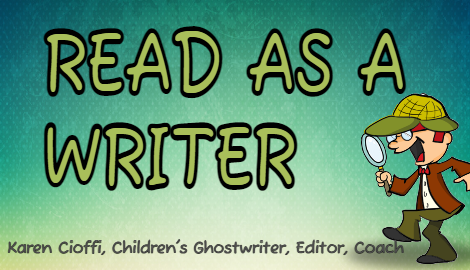Every writer has been told to read, read, read. Read as much as you can to improve your writing skills.
Well, I read an interesting article at Writer Unboxed that explained why simply reading to improve your writing won’t cut it.
According to the author, Julianna Baggott, Faculty Director of Vermont College of Fine Arts MFA in Writing and Publishing, “I’ve found that some of my most thoroughly read students – the ones who devour and love every book they come across – are some of my hardest to teach. I believe that how one reads is essential. And if you don’t master reading as a writer, sheer quantity will be of little use.”
Baggott broke down reading as a writer into five categories: blueprint reading, territory reading, language reading, portal reading, and singular lens reading.
Breaking them down:
1. Blueprint reading.
Blueprint reading goes back to read, read, read. While Baggott ‘kind of’ said this doesn’t work, she does agree that reading in volume does give you an idea of how a book is written to get published. (Assuming you’re reading traditionally published books.)
For my writing, I like this type of reading. Seeing how the author puts the story together, how he builds his characters, how she keeps the conflict rising, how he ties up all loose ends, and so on.
It is a great tool to learn ‘good’ writing.
2. Territory reading.
Territory reading is reading to take ideas away with you. These ideas could be from the topic, a chapter, or a scene. At least, this is what I think the author is saying.
I’ve done this. I’ll be reading a children’s book when an idea pops up. It may be something I’m reading that takes me in a new direction and gets the creativity flowing.
3. Language reading.
Reading with language in mind is to see the words that are used.
I do this often. While Baggott uses it for ideas and transitions into topics, I use it for the actual words. I love to see what words authors use to convey an emotion, a sensation, a description, and so on.
I also keep a database of words I find that I might be able to use down the road. So, just like the author of the article, I’ll have words circled or underlined in the books I read.
4. Portal reading.
I’ll be honest; I’m not quite sure what the author is saying about this reading experience. As far as I can tell, it’s reading and, through the scene, be transported into your own story. The book somehow acts as a muse to give you insights into your own story.
This experience hasn’t happened to me… yet.
5. Singular lens reading.
Singular lens reading is more about seeing everything through the lens of the story you’re writing. You look at book covers, titles, and contents and consider how they relate to your story.
As Baggott puts it, “This reading is how you look at the world around you when you’re so deeply involved in a project that everything you encounter gets filtered through that one lens.”
As a ghostwriter, I usually work on more than one story at a time, plus my own stories. Because of this I don’t get ‘singular lens’ anything.
But it’s easy to see how this can happen.
Summing it up.
As a writer, I notice how I read differently than someone who doesn’t write. I see grammar, sentence structure, chapter structure, story structure, and character building, and sometimes all this is at the sake of the story itself. I’ll have to stop myself to be able to just read the story.
But this is what writers do consciously or subconsciously. We can’t help it.
Now you have five reading styles to help you write your stories.
Have you found yourself using any of these reading categories?
Reference:
5 Ways to Read as a Writer
Writing for Children – Character Believability and Conflict
The Outline Method of Writing (Are You an Outliner?)
The Book Summary – Five Must-Know Components

I’m a working children’s ghostwriter, rewriter, editor, and coach. I can help turn your story into a book you’ll be proud to be the author of, one that’s publishable and marketable.
OTHER HELP I OFFER:
HOW TO WRITE A CHILDREN’S FICTION BOOK
A DIY book to help you write your own children’s book.
PICTURE BOOK AND CHAPTER BOOK COACHING
Four to ten-week coaching programs.
WRITERS ON THE MOVE PRESS.
Self-publishing help for children’s authors.
You can contact me at: kcioffiventrice@gmail.com. Or give me a call at 347—834—6700. (Please leave a message- I’ll get back to you as soon as I can.)



Thanks for the tips….very helpful and informative.
Hi, Angela. Glad you found it helpful!